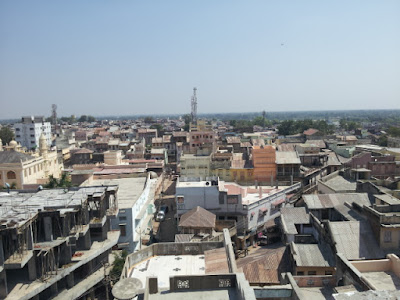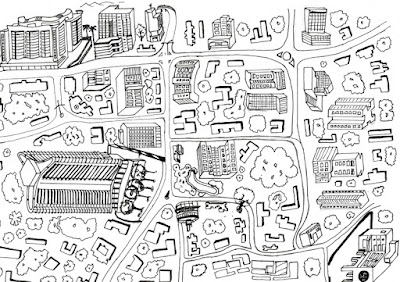We are just finishing up the admission process at SEA. Like the last year, SEA chose the students for its "Institute Level Seats", popularly understood in the other schools as "management seats" through an internal interview process. There were about 150 applicants for the mere 8 seats (out of a total of 40). Apart from people's recommendation to its educational quality, the applications to SEA also pooled in for these seats because they were "free" - that they were not "sold" through accepting donations (that generally amount in six to seven digits in most other schools). While many filled in the "Institute Level Form" to avoid missing out the opportunity of being in an educational environment like SEA at any cost, even when they could avail the seat through the centralised MASA procedure; many others applied for financial reasons. SEA recognises several other intents which direct people to fill in its Institute level forms - low grades, geographical transfers, missed out deadlines for forms, delayed results, and so on - basically those which dodge the official processes of availing an admission into colleges. The interview process is a unique way in which an attempt is made for evaluating a candidate in a well rounded, multi-dimensional perspective.
The SEA Institute Level Seats, meanwhile, are offered only to students on the basis of merit. According to me, "merit" is not understood at SEA as merely an aggregate of different scores achieved in the 12th or NATA examination. It is a broader idea that includes personal characteristics like self-awareness, consciousness, cultural sensitivity, passion, determination, perseverance and rigour that may inform the candidate's future course of education in the field of architecture. The above values, it may be debated, are informed by the socio-economic status of a candidate. Following such line of thought, SEA would have end up in creating its own "reservations" criteria in allotting seats to candidates. Whether SEA must take such a step, or not, is a larger question that needs rigorous internal debate. The least I can say is that SEA panel is aware of these questions, and that it will learn and improvise with every round of interviews. At the same time, it is working on an alternate strategy of helping students with need-based scholarships.
This year however, SEA unknowingly ended up screening students who belonged to more-or-less a similar economic background - the middle and the upper middle class section. These students were chosen based on their performance on the drawing test and personal interview, certainly not on their economic status. On a parallel contemplation, we all often wonder how to balance the aspect of finances with the education that is being offered. As explained before, there are two aspects to the Institute Level seats at SEA: one is that they are competitive in a broadened sense of "merit", and other, is that they are free. Which one should be given more emphasis in the selection process? The selection process through the last two years have shown that what we consider as "merit" is closely linked to the socio economic status of the candidate. Effectively, it means that exposure, environment and prior education - all that are linked to one's financial status, and shape the individual. In other words, have we failed to recognize the very linkage between the social and economic forces that have seemed to dominate our very selection? On the other hand, if we believe that a school like ours can positively make a change to a student who otherwise does not have sufficient access, who has remained behind due to lack of adequate guidance, who has suffered because of his economic background (which may have driven his choice of local school, etc.), who has not got a chance to be in an environment where he/she could learn effective communication and confidence, etc; how are we to look forward? To be sure, we have certainly had such candidates, promising within their own levels of exposure and economic boundaries. However, they naturally were left far behind in the way our selection criteria was devised.
While these economically weaker could have in no way afforded to a pay donation perhaps to any school (some of whom may also have purchased the admission form priced at Rs. 2000/- with some hesitation, but with the hope of getting fair admission); some of the others who actually got selected would have wilfully paid generous donations to other schools, if need be, and in case they were not accepted at SEA. The SEA interview system, in this perspective, seems to have lost out on two fronts: The first is that of accepting a challenge to train an average, but possibly interested student empowering him/her to chart his own successful career, in that sense making a difference to a genuinely needy person - through its "free-of-donation" seat; the second of losing out on the much-needed "donation" that a reasonably well-to-do, candidate would have otherwise wilfully paid towards building the infrastructure of a fledgling school.
SEA doesnot accept donations because it doesnot wish to "sell" its seats or be pressured by any external parties in the process of delivering education. However, these are the challenges that an Institution like SEA, (read an institution whose foundations are laid on principles of honest and fair education, ethical practices), faces. I must emphasize, after learning from the experiences our staff of handling "admission procedures", that like many other schools today, SEA received multiple recommendations, calls, letters and monetary offers for admitting students unofficially. Many people are quite openly and shamelessly willing to pay huge amounts to "buy" a seat at SEA. These people had to be tactfully evaded by our staff team. What surprises us though, is the fact that how people have naturally taken upon themselves to pay lofty donations, instead of curbing this very attitude that has wrongfully seeped into institutional processes, through a common protest.
Perhaps the middle-class individual, from some generations now, has begun to prepare for this dubious process of admission right from the beginning of his career. (On the other hand, there is a blind competition amongst students to score better and better marks to evade such "bribes". Such attitudes often result into youngsters who are "blind" to the multidimensionality of the world, buried into books and narrow minded middle-class moralities). But as mentioned before, the preparation that the middle-class makes much in advance, are huge investments for years in anticipation of feeding a corrupt system - huge monies are seemingly kept aside for all such purposes! Even more dangerous is a situation where prospective students themselves volunteer to pay donations (evident in the manner in which they discuss affairs at admission centers), and further coax their own parents to submit sums of money for procuring seats in educational institutes. Such behaviour seems blasphemous in a time when the country is just out of a huge protest against corruption, when the political mood seemingly aims to overturn corruption, and when, even if in another state, Kejriwal rules by his "honest" principles.
However, what makes all of us cringe, is that the same middle-class individual who has probably saved up that much money on a seat which he/she would have bought through lofty donation wouldn't volunteer to pay even 1/3rd of that amount as a philanthropic gesture to support activities of an institution like SEA! Philanthropy for the middle-class individual is probably an attribute of the "rich". Rightfully so. Philanthropy is not, after all, a middle-class idea. Being a middle-class myself, and thinking through this, I wouldn't be able to "donate" money to an institution without any purpose, or especially once my job is done, that too by a "fair" way! In such a situation, somehow, the value for that very money becomes critical and the individual gets over-rational. How can a morality that is built on the ideas of savings and bargaining ever think up of "donation" as a philanthropic act? That is absurd! But where does this rationality disappear in the first case, where the seat in an educational institute is literally traded, where the account of the money, often exchanged in cash, is inconsequential to the giver and moreover is unfair!? Of course, in the latter case the act is submissive, where clear power politics is at play - the needy parents being at the other end...
It is evident that SEA is ambitious, to an extent that it attempts to offer fair compensation to individuals, best teachers, adequate space, exciting programs, cultural events - all of it, even if it pinches their own pockets. That, with the ambition of building an infrastructure (within its limits) that stand at par with the standards of the best schools of architecture we have around us...
In this outpour, I tried to explore the complicated and dilemmatic process and product of dealing with fair education practices. The matter at hand has many more dimensions. It is evident that choosing an alternative pathway brings you at new crossroads, that ultimately sets new trends and new ways of thinking and working.
---
The views expressed in the above post are purely personal and do not in any way represent those of SEA or partner organizations.




































